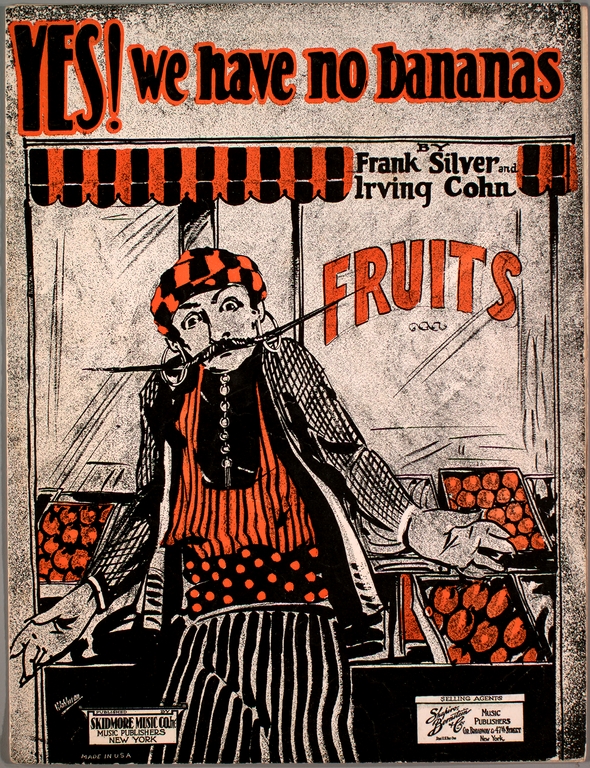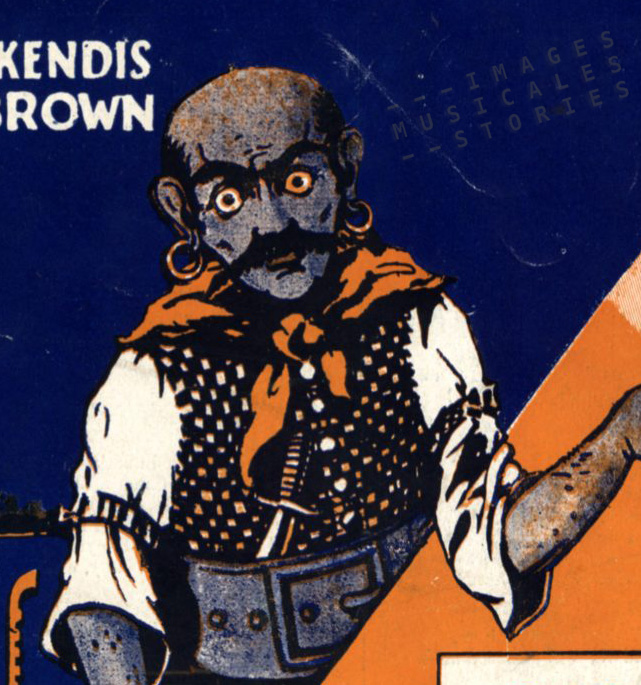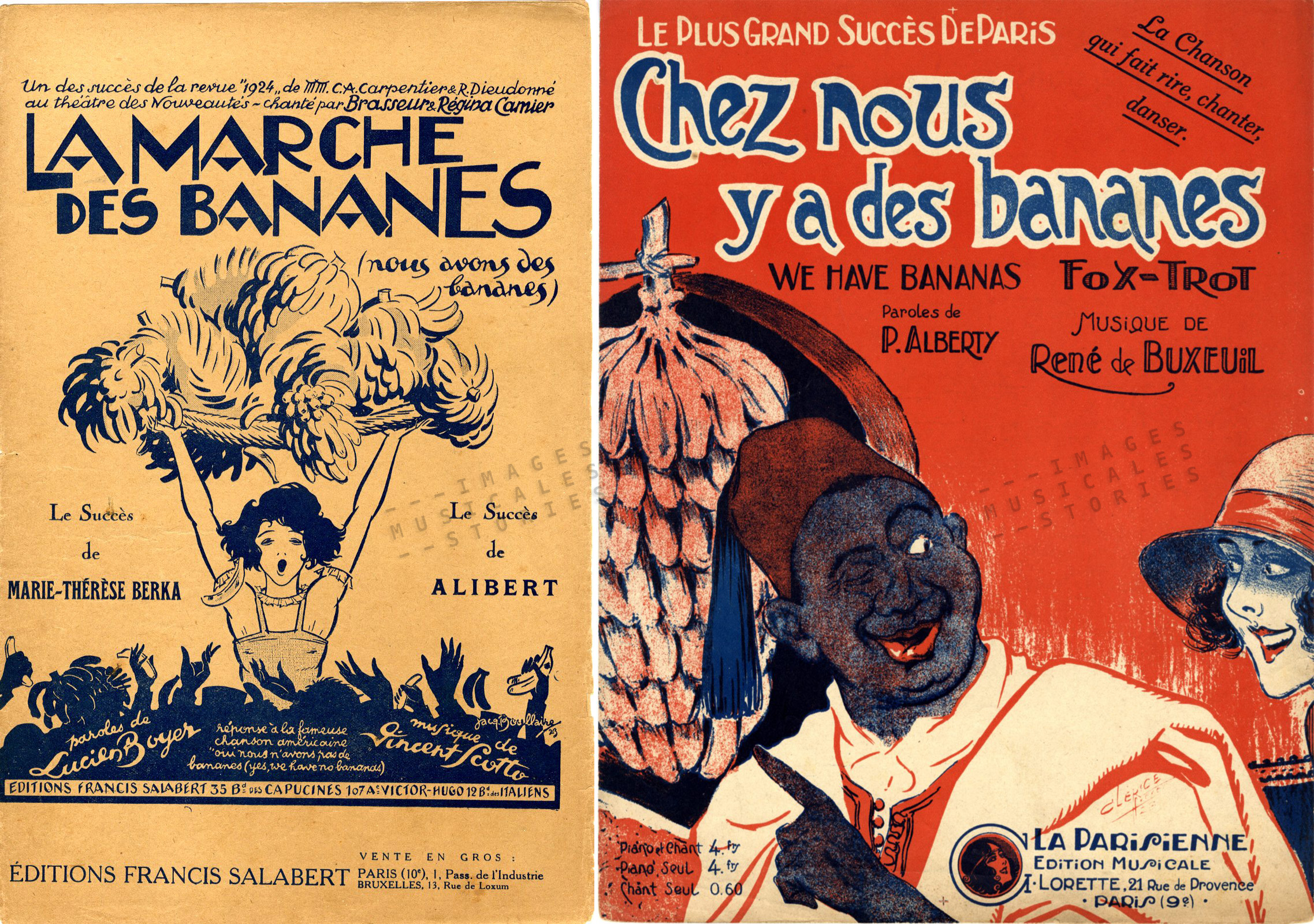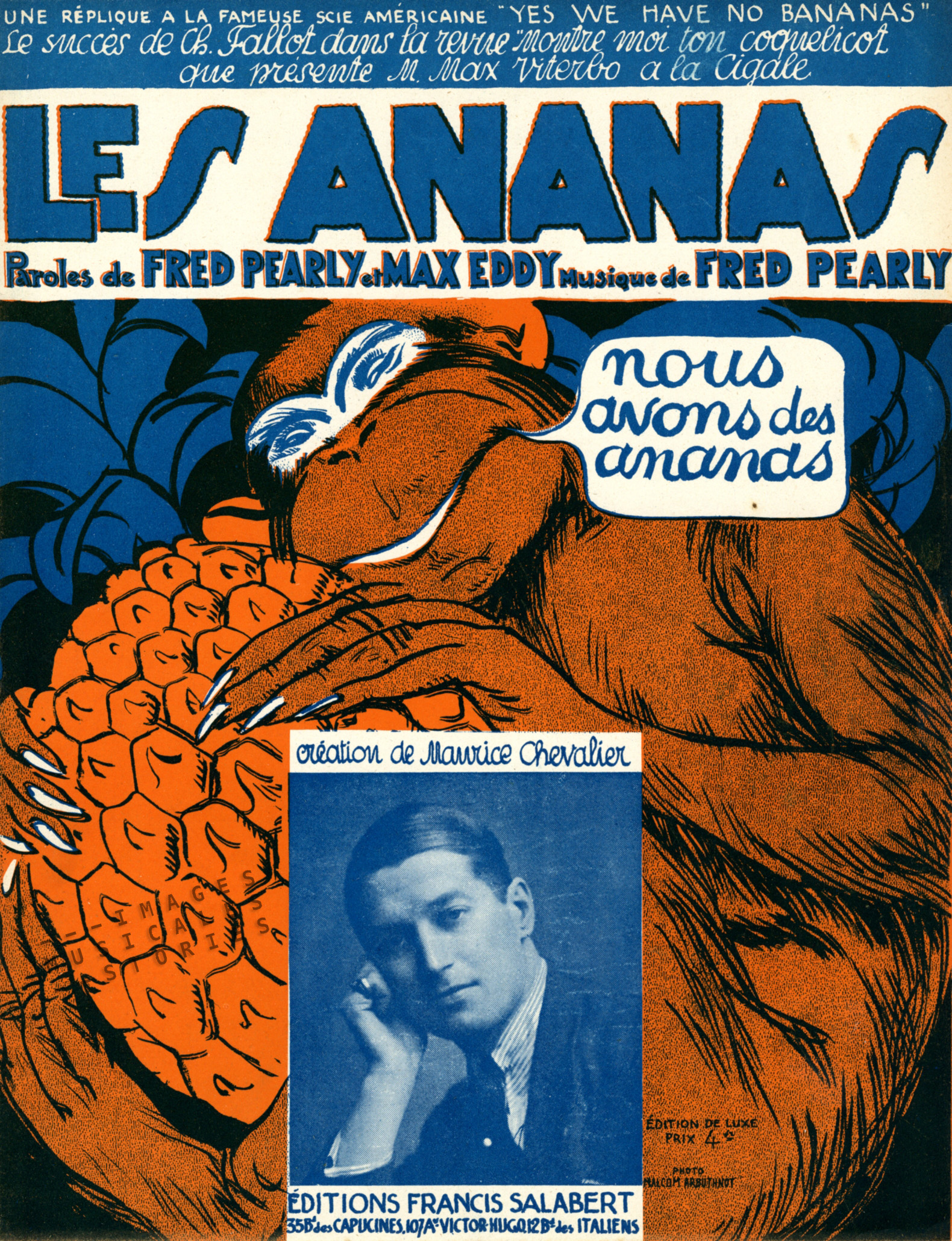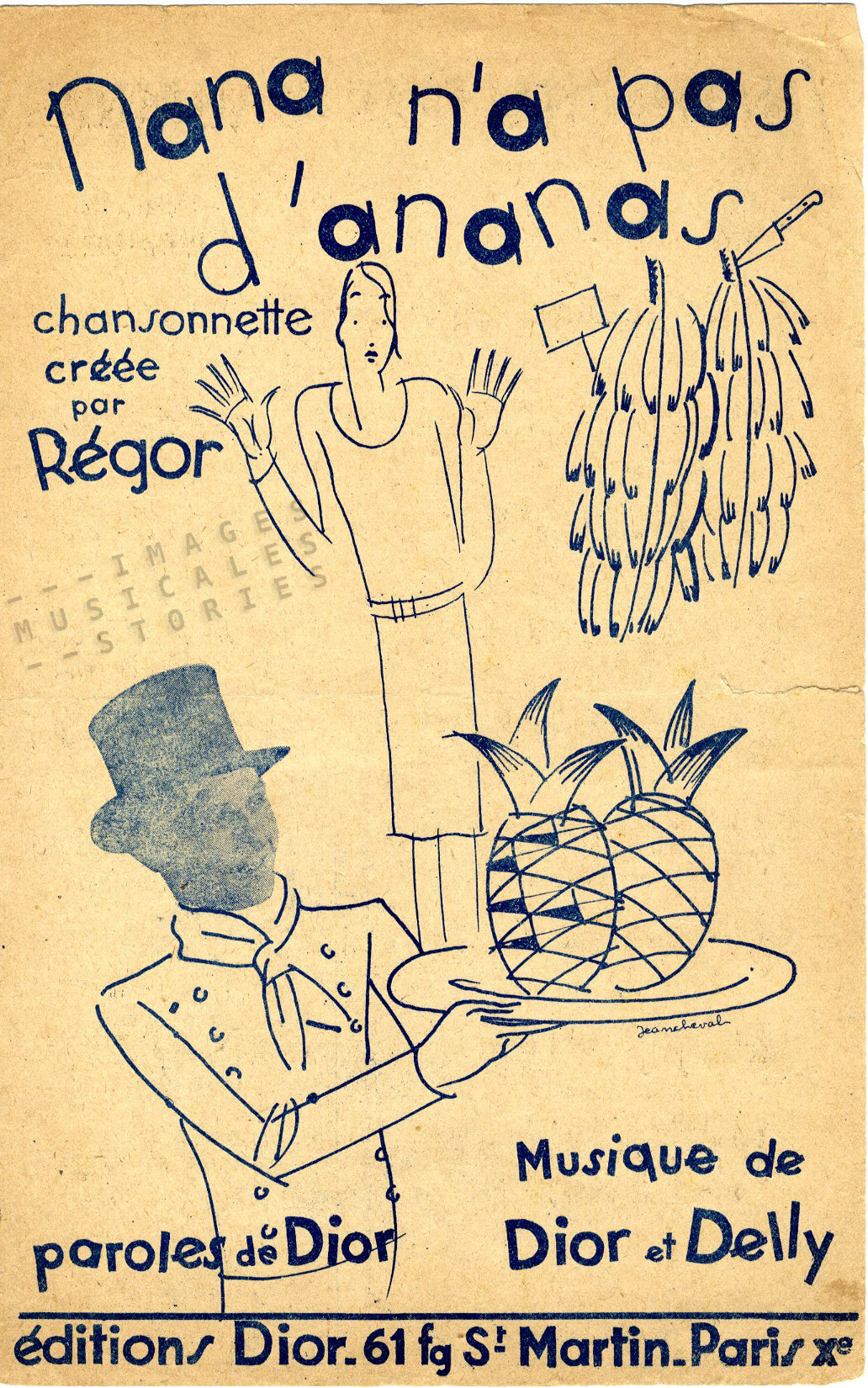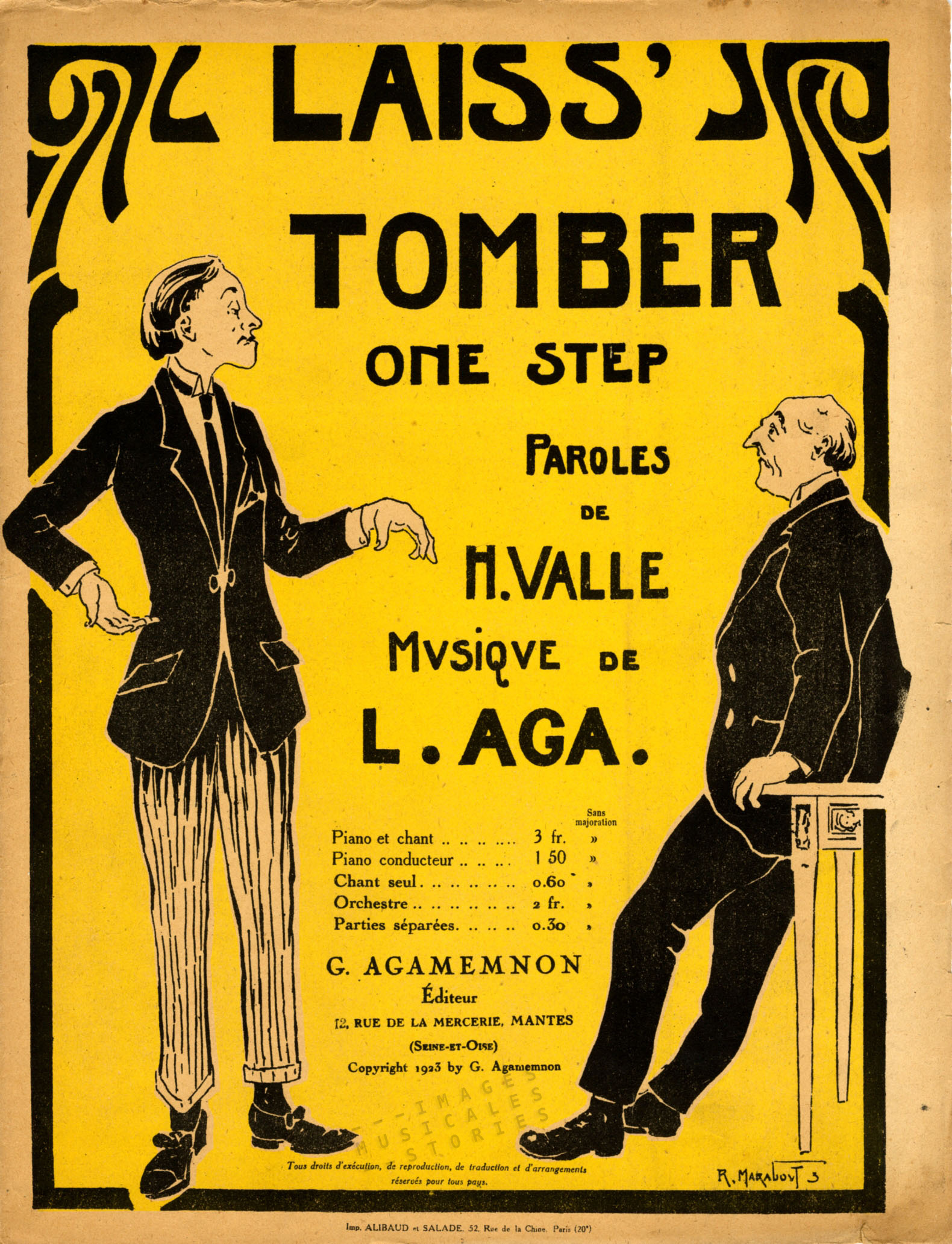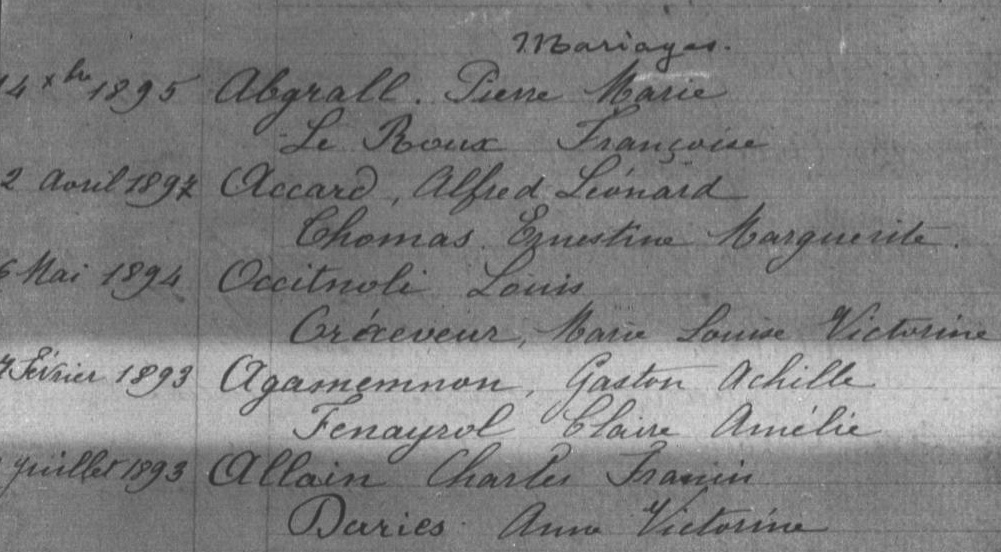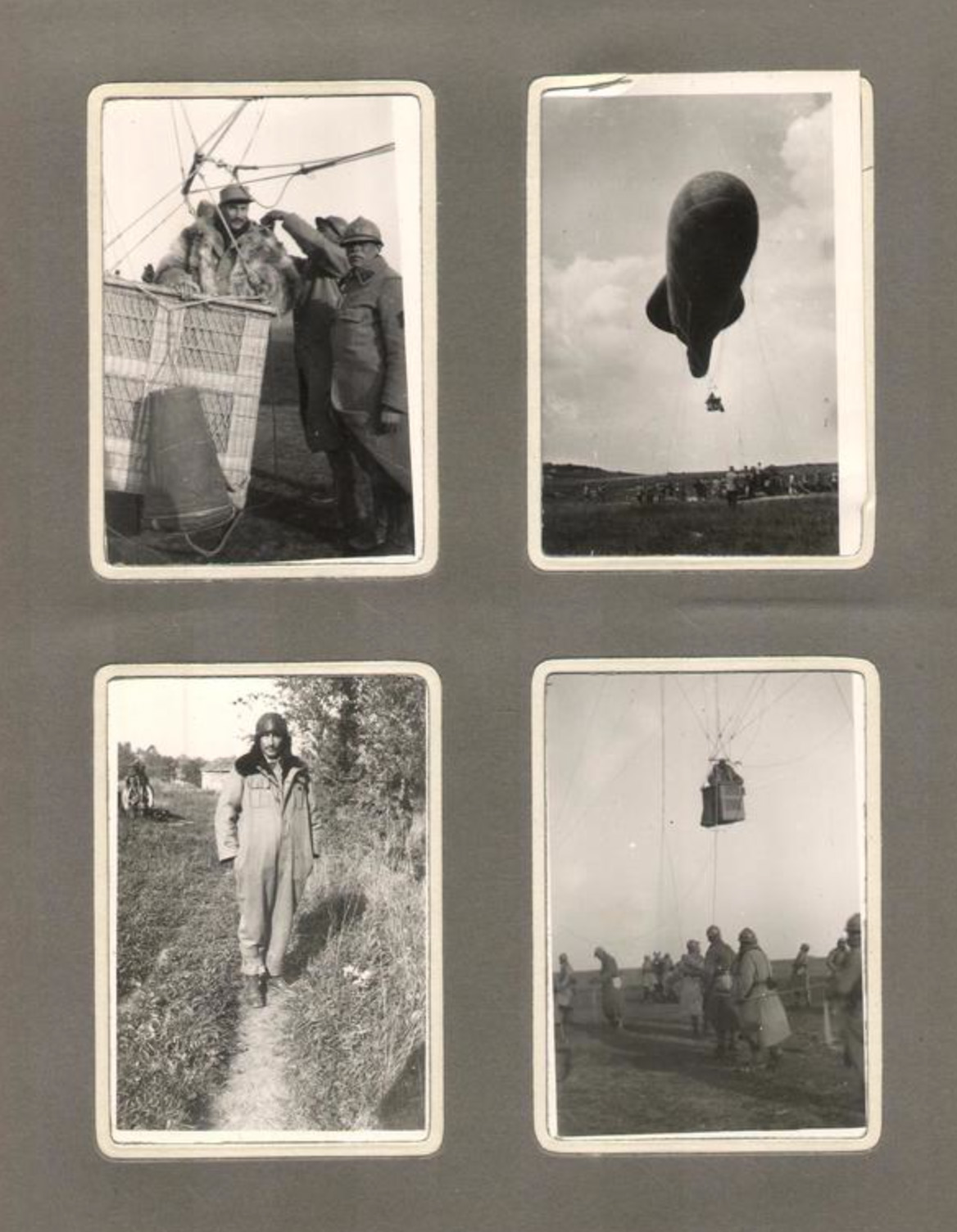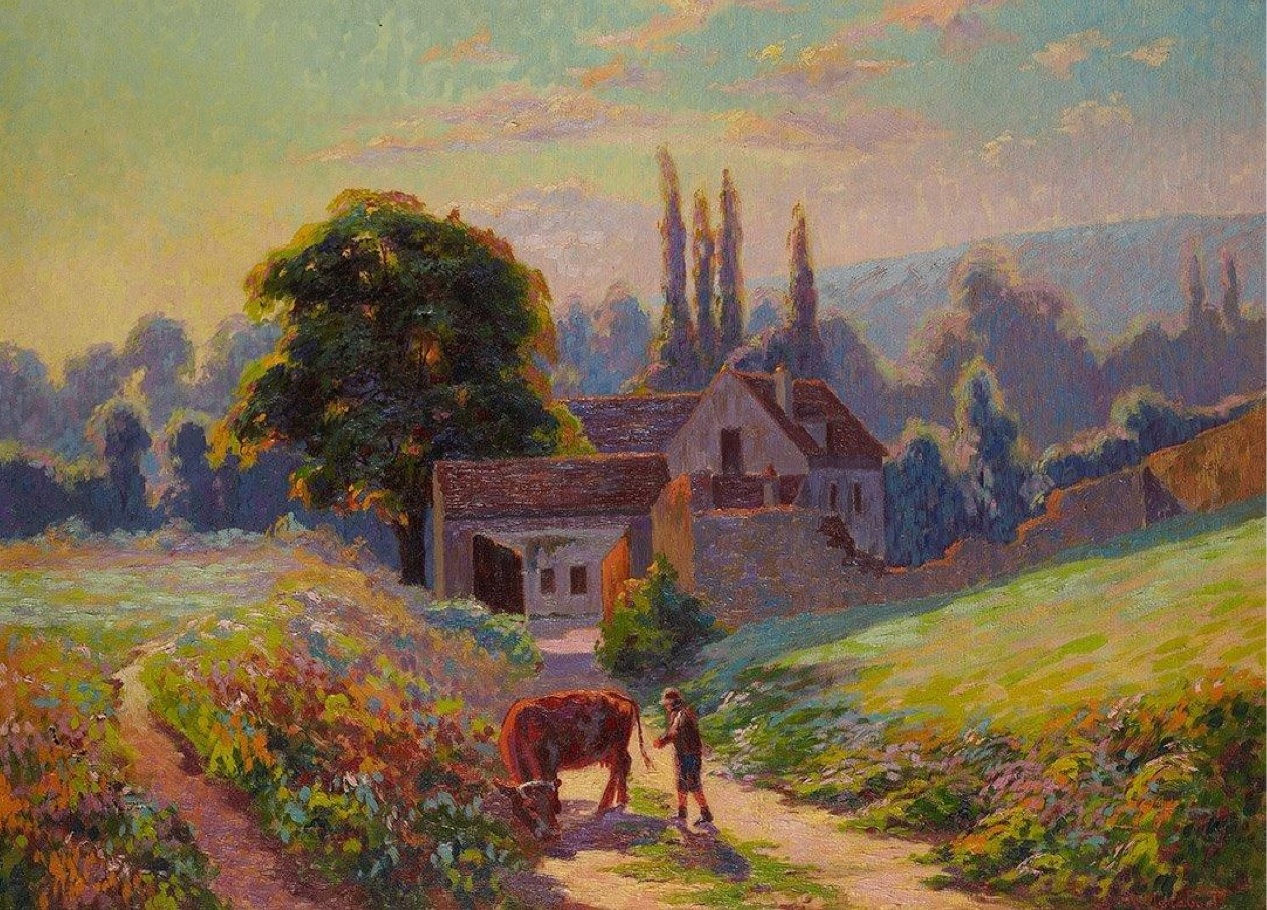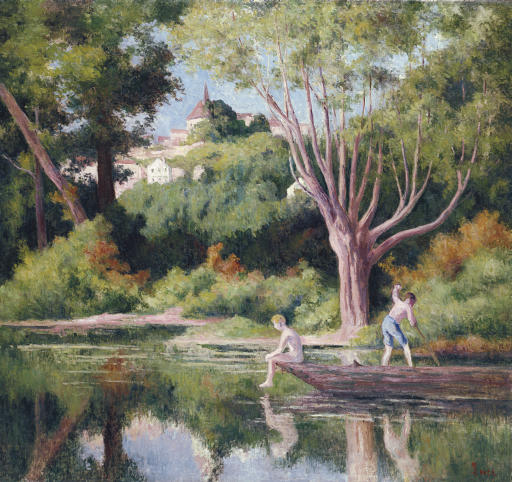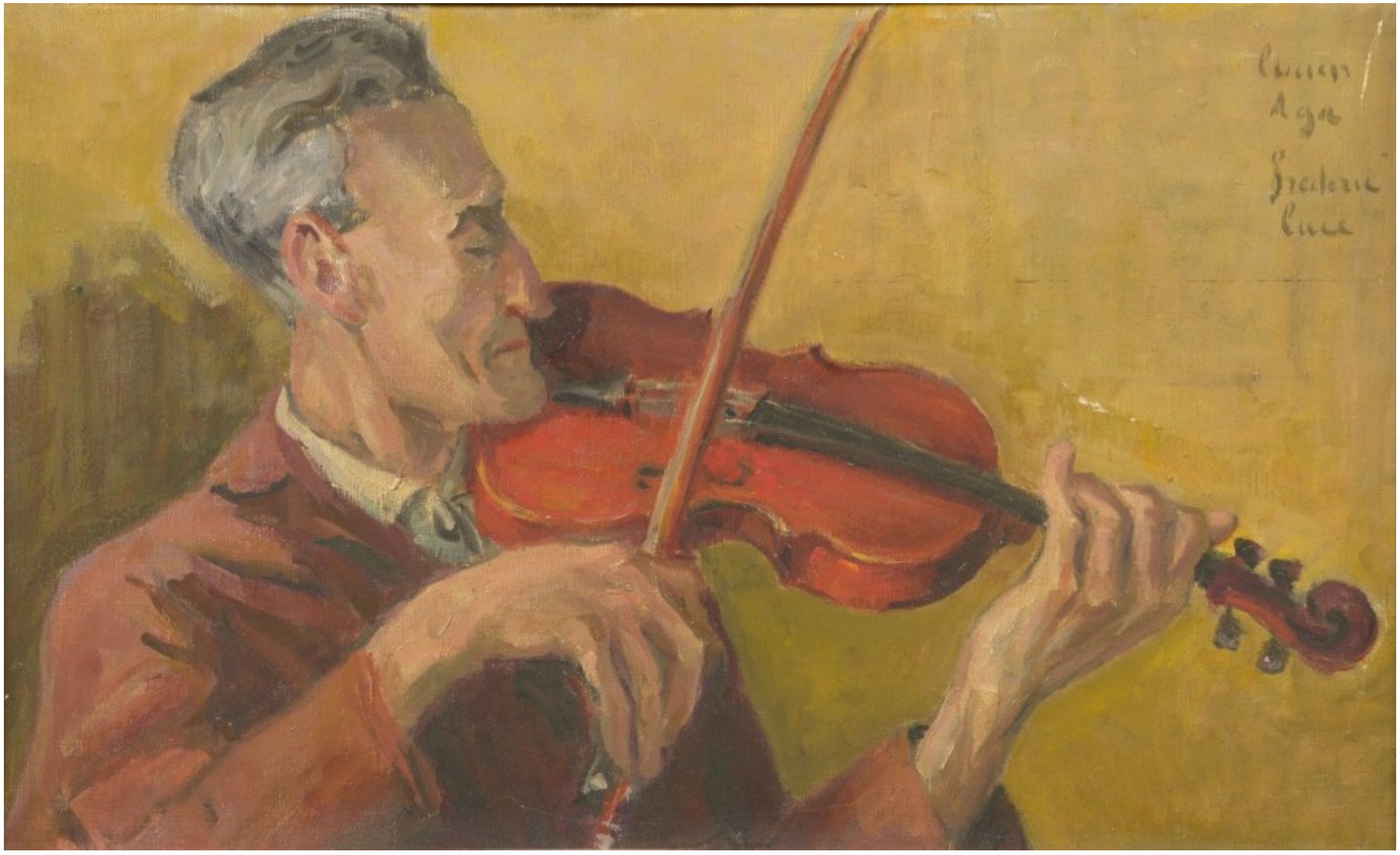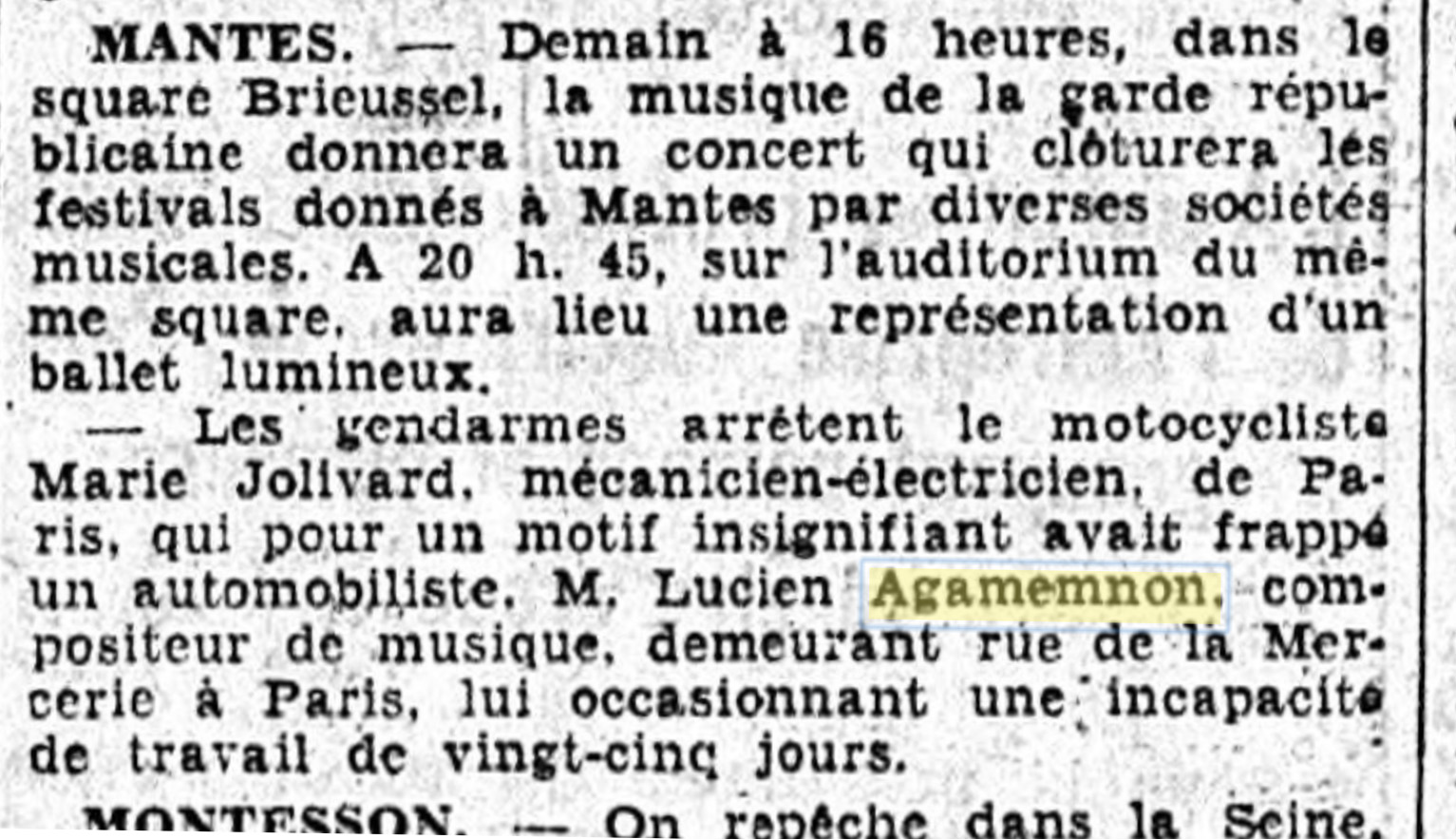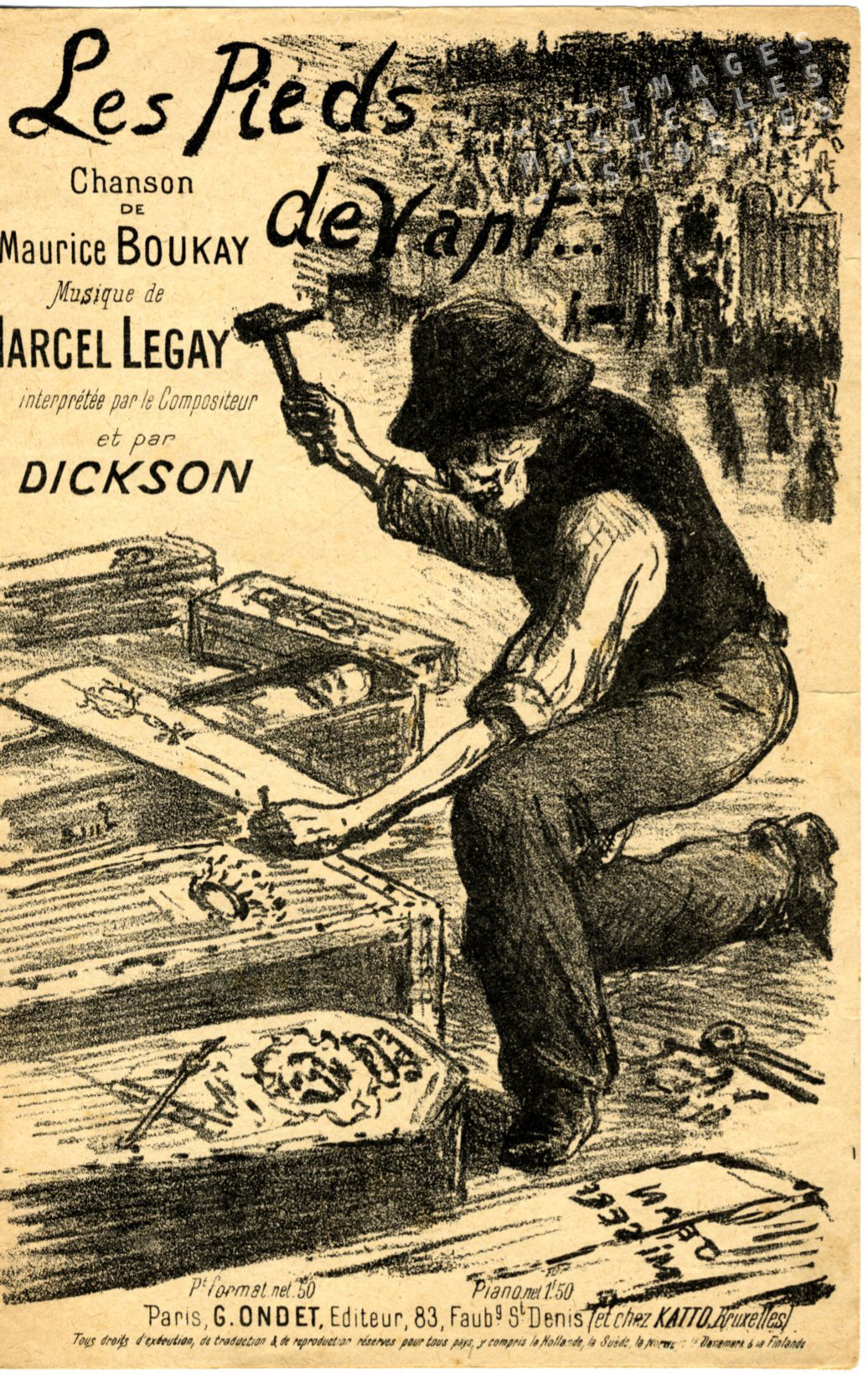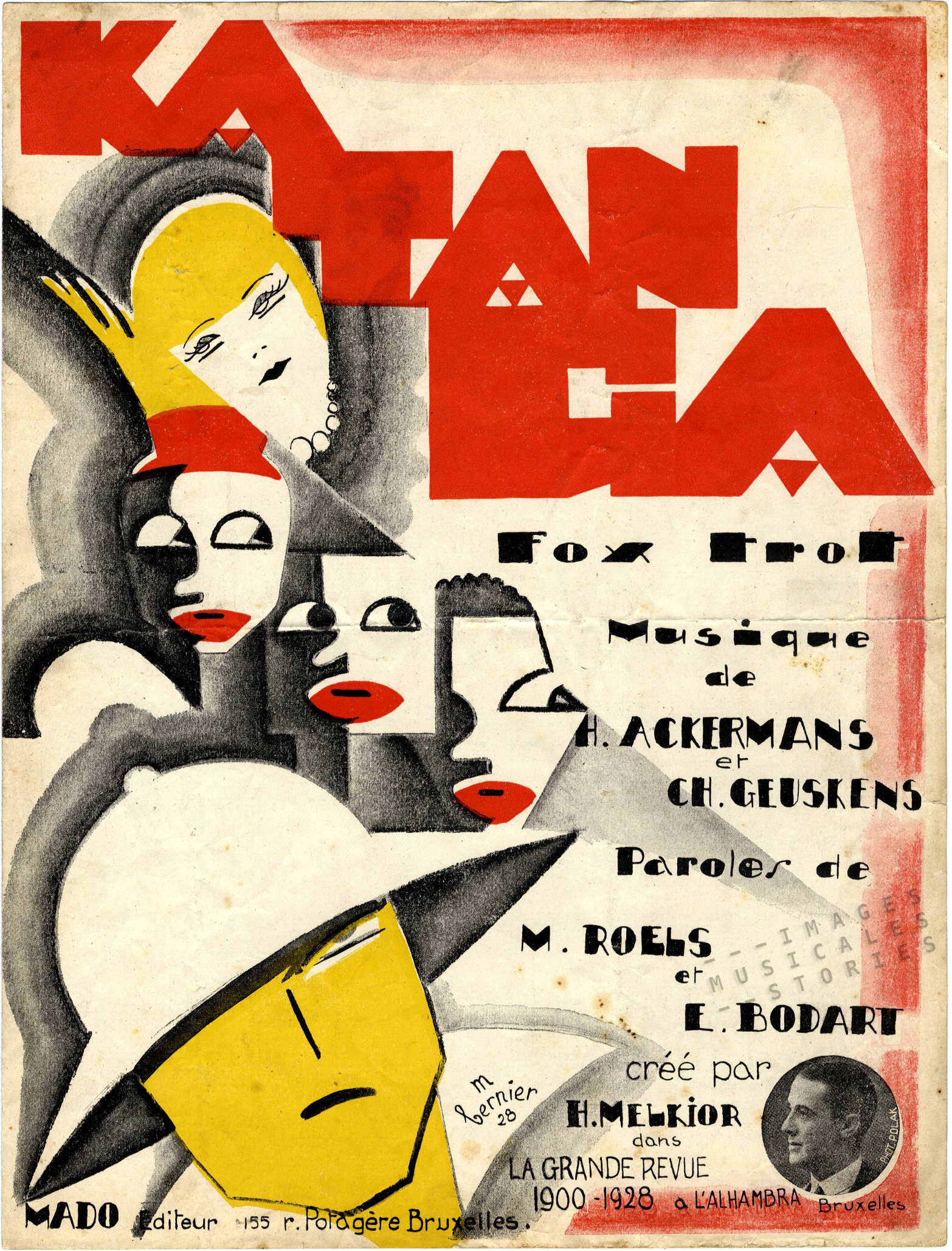
Voici le style moderne: the Katanga Fox Trot! The forthright and powerful cover made by Alfred Bernier has the typical Art Deco marks. A purified theme, rendered with honest lines and shapes. The natural forms are geometrically stylised, they become streamlined. Repeated elements create a rhythmic tableau of colours, shapes and letters for the song about a man longing both for the faraway land and the woman who lives there.

We know next to nothing about Bernier. Having studied at the Académie de Bruxelles, he was active as an illustrator for Belgian music publishers during the end of the Twenties. He was born near Buenos Aires in 1888. We have two other covers in our collection, one of which is the black and white ‘Volga!’. This is thousand miles away from Katanga, but also a delicious Art Deco cover. The stark composition expresses the strength of the workmen and the violent wind. Again, repeated elements create a dynamic scene, frozen in time.
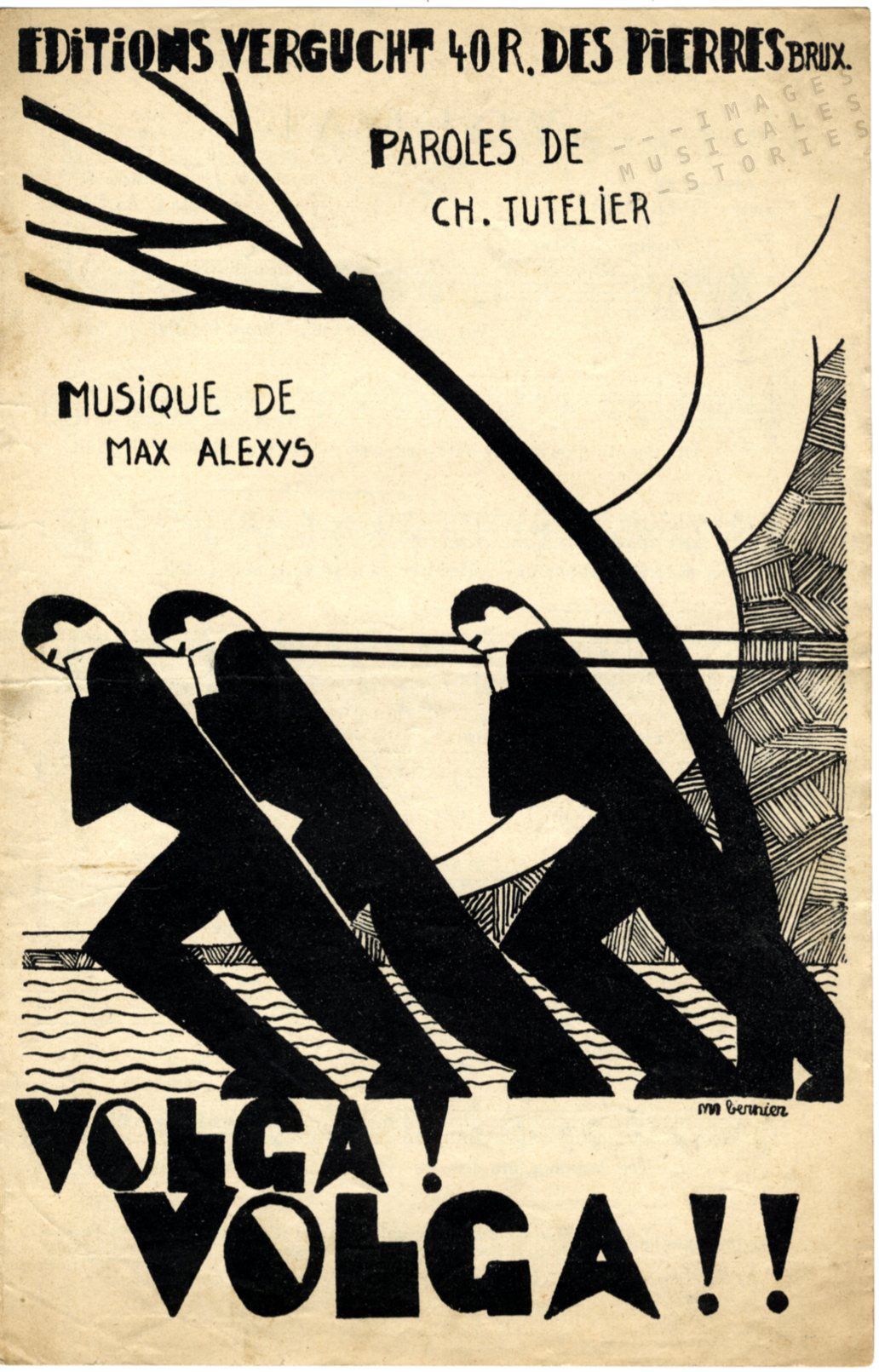
The song by Charles Tutelier was probably inspired by the 1926 epic silent movie of Cecil B. DeMille, The Volga Boatman.
This big-scaled romantic melodrama, set in the 1917 Russian Revolution, was a shift from the usual anti-Bolshevik films, in that it also focussed on the oppression and the cruelty of the Czar’s regime and did not portray all the revolutionaries as just dumb and violent agitators. On the contrary, our hero is even susceptible to romantic entanglement. See for yourself in this short montage we made from the 2-hour classic of the silent screen.
The film gets an unintentional Dadaistic twist when the social order is being ‘revolutionised’ by the Reds.
The film was an international success and generated sheet music covers in many countries.
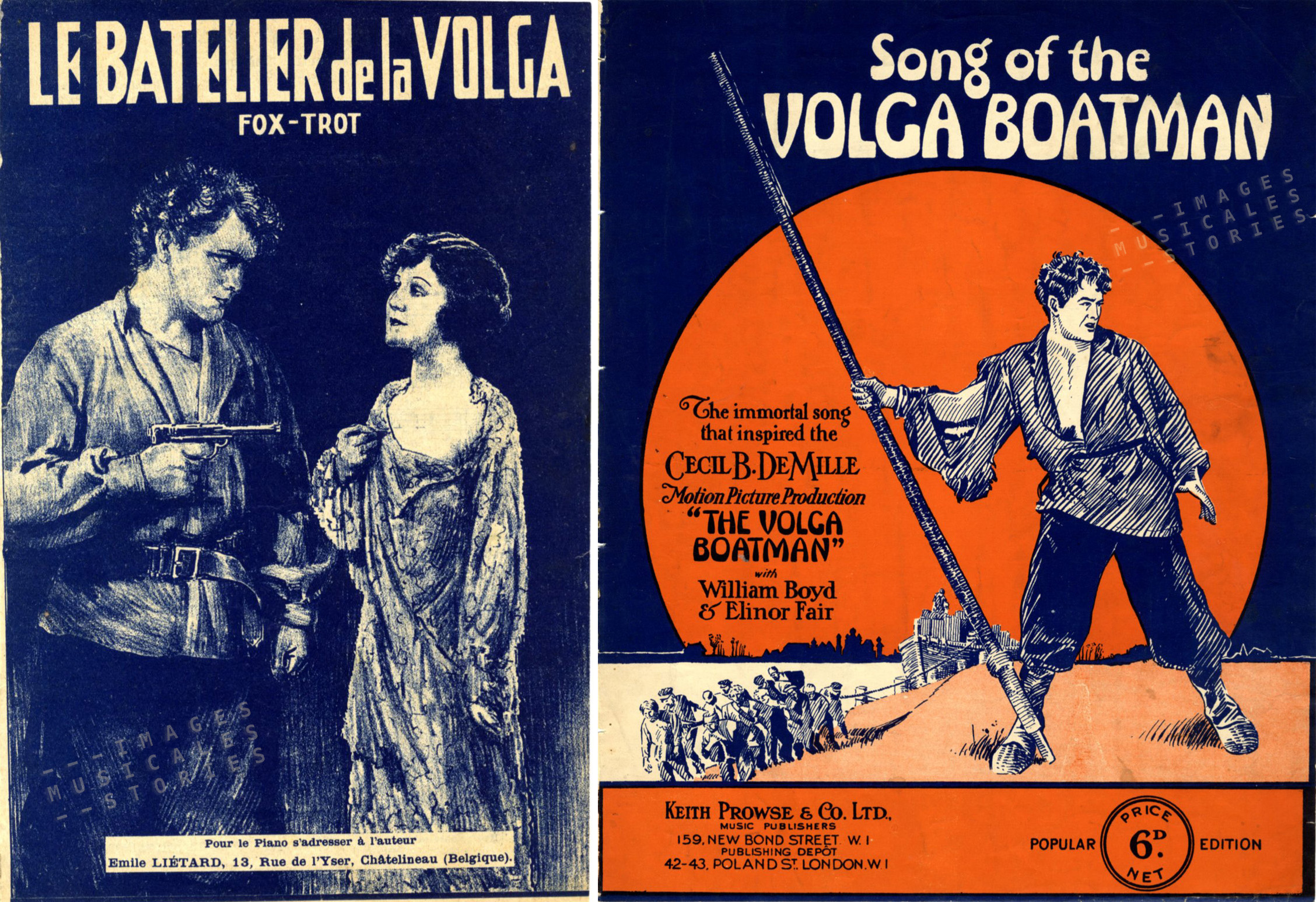
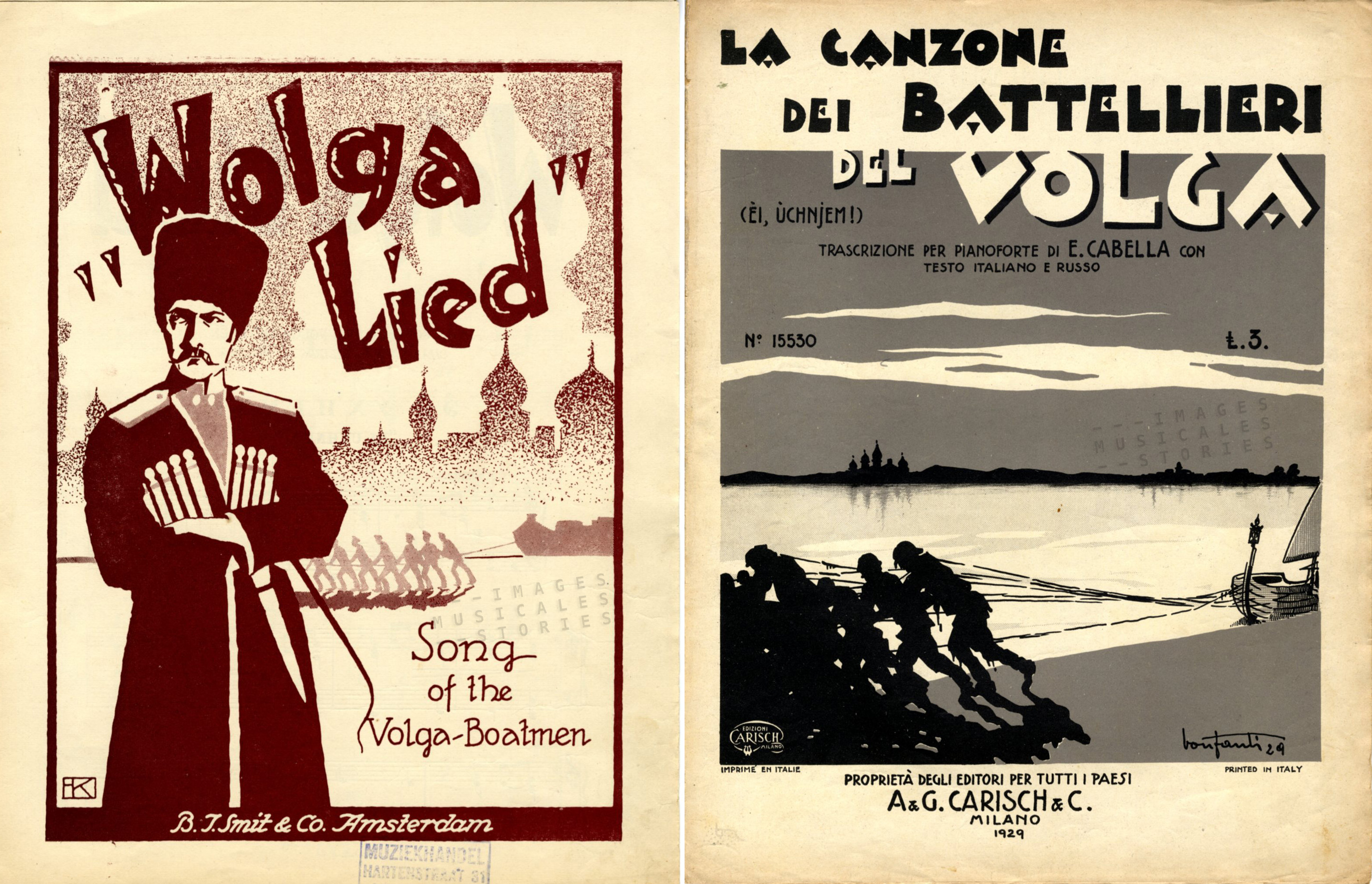
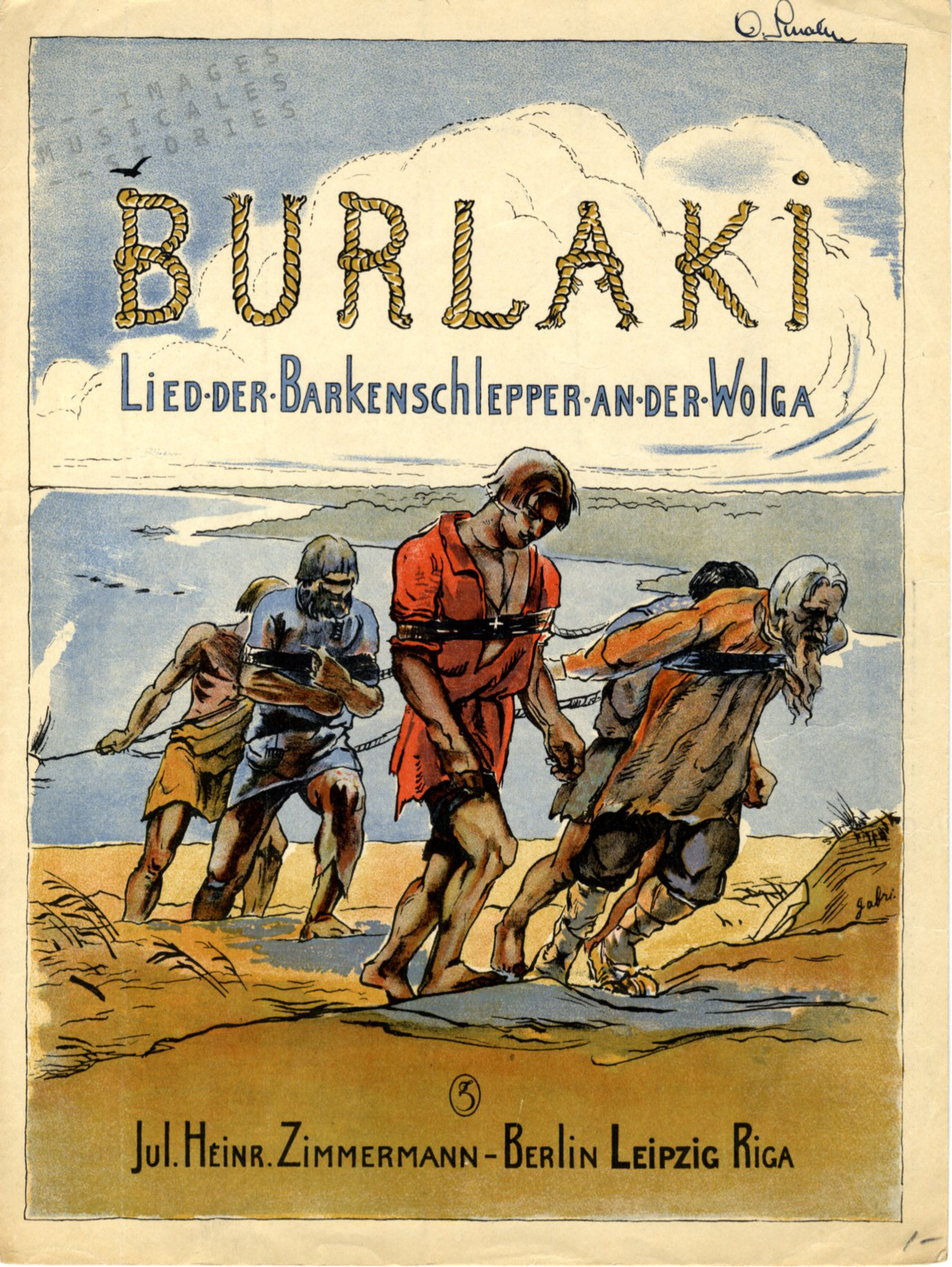
One can wonder why in 1917 the title character had to work as a boatman on the Volga. For at least a few decades there hadn’t been any boatmen (Burlaks or barge haulers) working on the Volga. Cecil B. DeMille called this tampering with ‘details’ from the past, telescoping history. His reason was probably very Hollywoodesque: if the American audience knew one Russian song, then it undoubtedly was The Song of the Volga Boatman. Let’s take a minute to hear and see a poignant and primal rendition of the song by the Bulgarian bass Boris Christoff.
‘Ey, ukhnem!’ is the Russian title of the well-known traditional folk song. In 1866 it was published for the first time, with only one (disconcerting Boy Scoutish) verse:
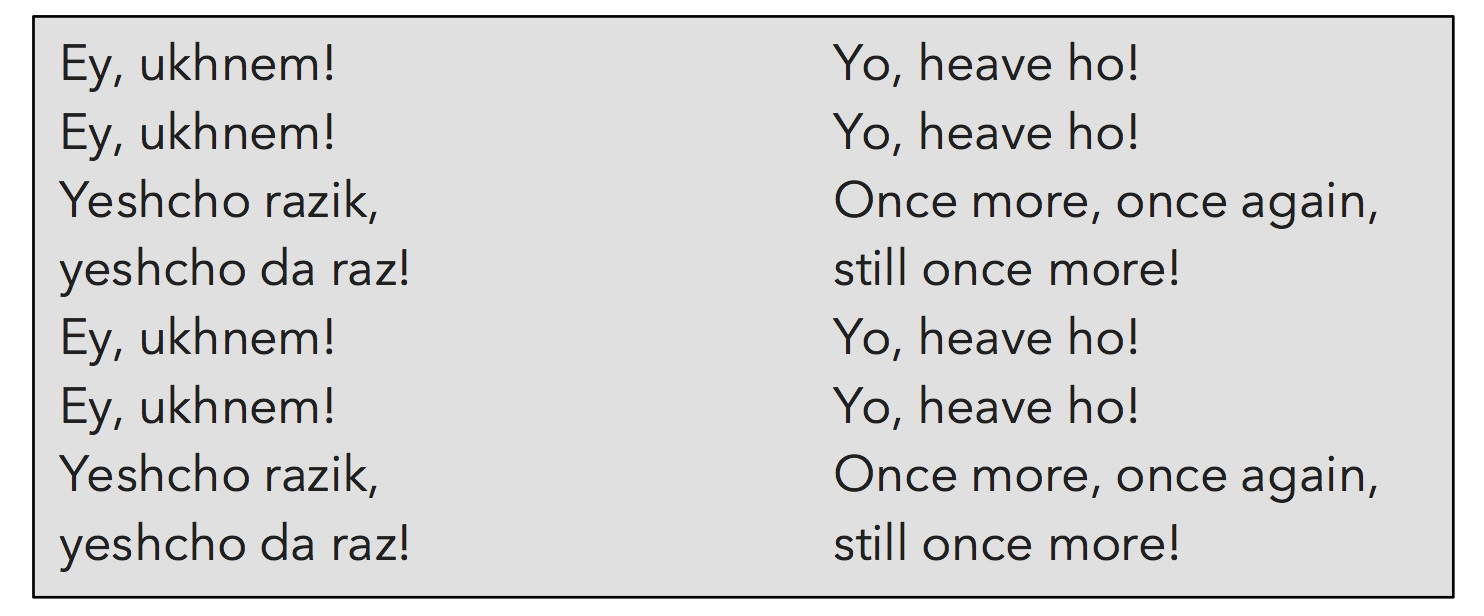 The firm stance of Christoff calls to my mind the posture of the gentleman singer drawn by Jules David for the song ‘Ténors et Basses’.
The firm stance of Christoff calls to my mind the posture of the gentleman singer drawn by Jules David for the song ‘Ténors et Basses’.
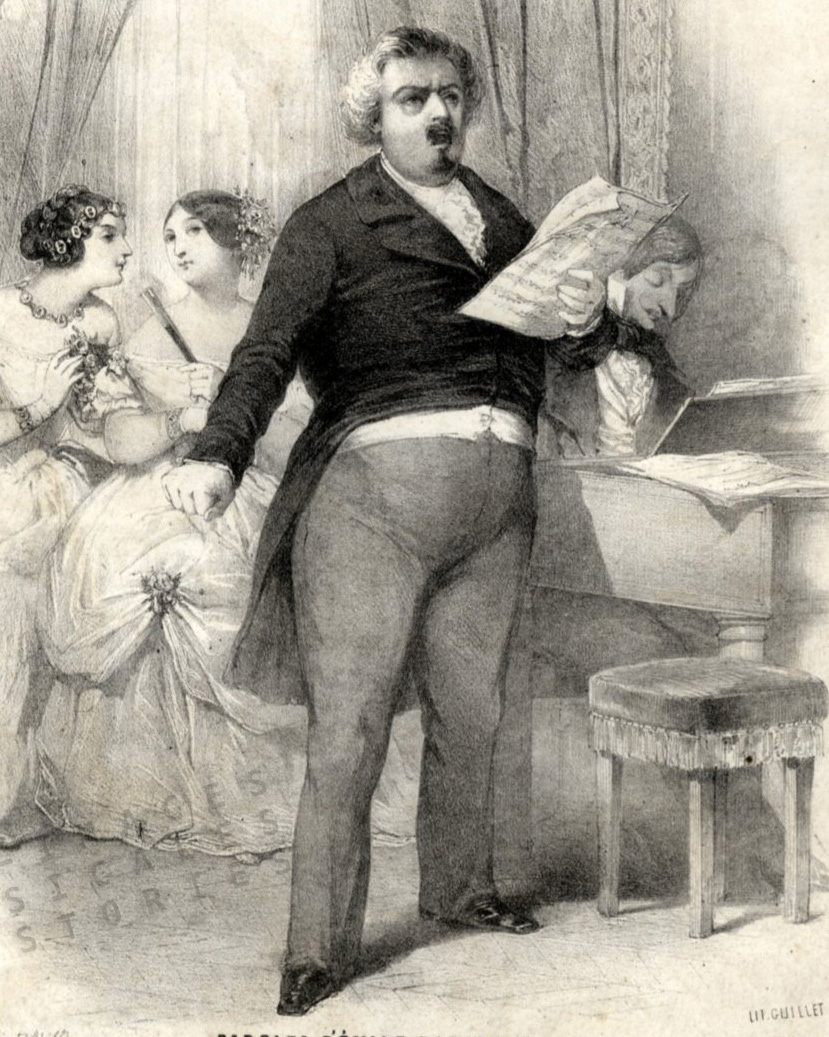
In 1873 Ilya Repin finished his iconic (almost 3m wide!) painting of burlaks along the longest river of Europe, in Tsarist Russia. It both condemns inhumane and harsh working conditions, while also saluting the dignity and long-suffering of the exhausted working class.
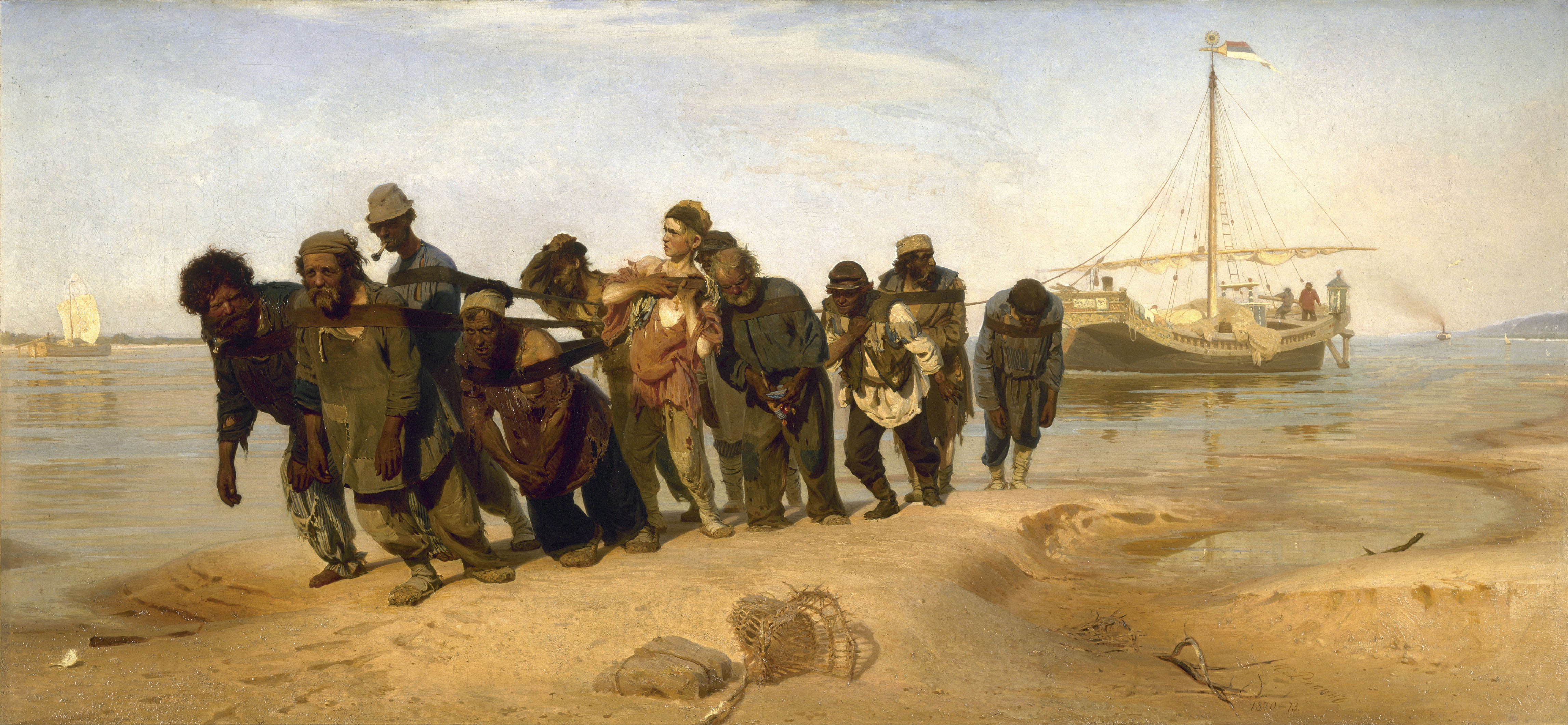
It was not only in Russia that ships were pulled by manpower along a tow path. Wherever it was impractical to sail, human force was used to drag the vessels. In the second half of the 19th century it apparently was a favourite theme for painters.


We found unsettling photographs of this human labour.
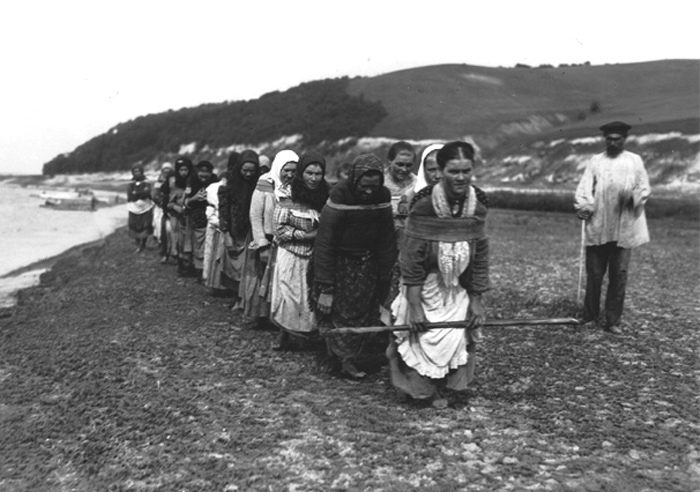

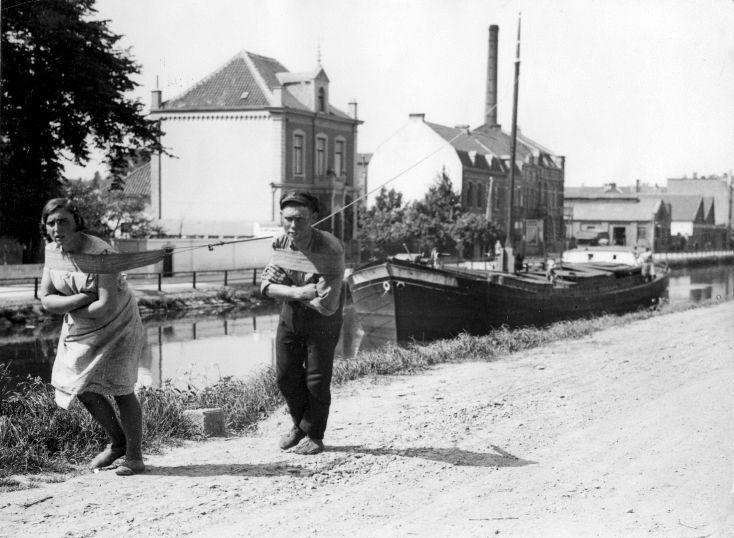
Later vehicles and beasts of burden replaced the human pullers, before the work became obsolete when ships were fitted with engines. Towing paths now offer pleasant walks and tourist rides.

One more thing. Volga also was the name of a car manufactured by GAZ in the USSR from 1956 on. The Soviet nomenklatura chose the Volga as their favourite car to commute between the Kremlin and their dacha. For many Russian generations the brand became the symbol of style and success. The first model was the GAZ-M-21. But then, that’s a completely different hobby…
(credit: Youtube’s Ramzis123)

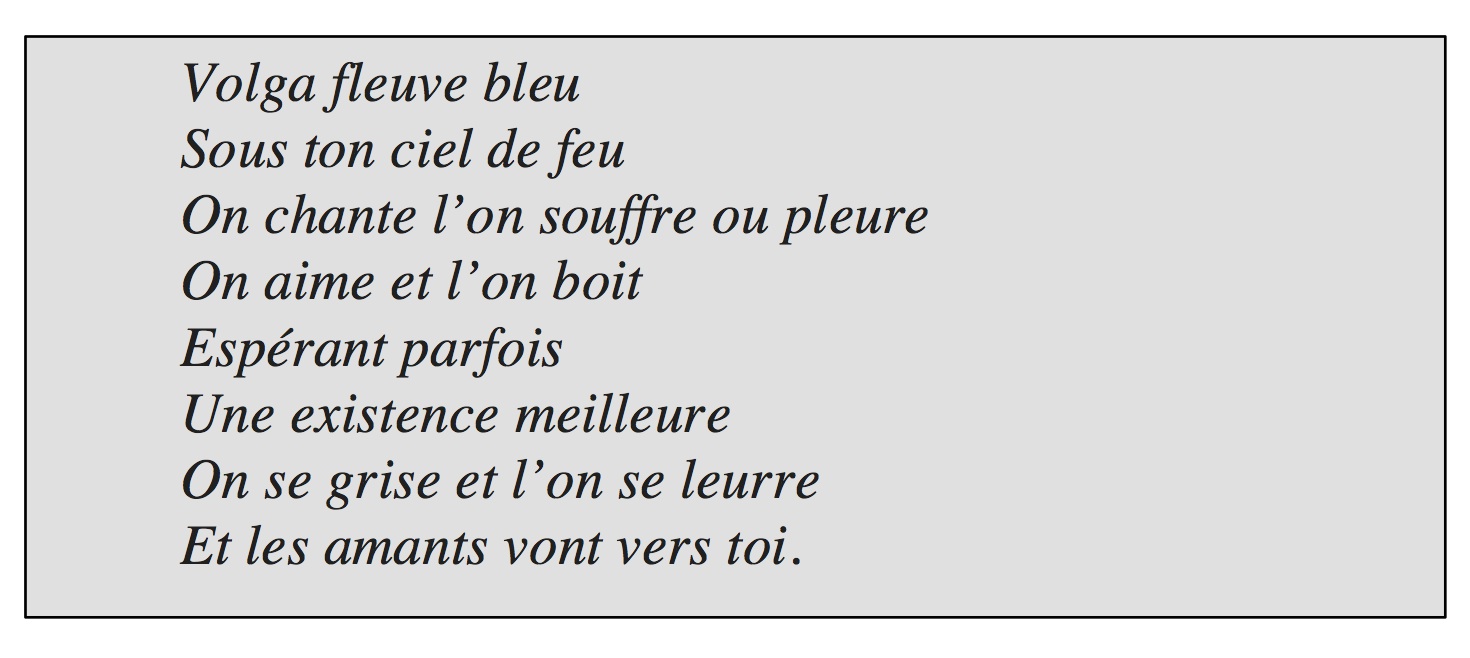


 Roger de Valerio, an illustrator with a vivid imagination, apparently didn’t read the original lyrics before illustrating the cover of the French version of Yes! We have no Bananas. He simply associated bananas with the stereotype of the
Roger de Valerio, an illustrator with a vivid imagination, apparently didn’t read the original lyrics before illustrating the cover of the French version of Yes! We have no Bananas. He simply associated bananas with the stereotype of the 